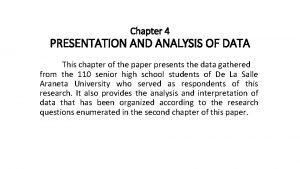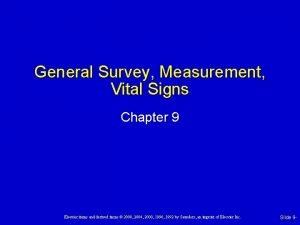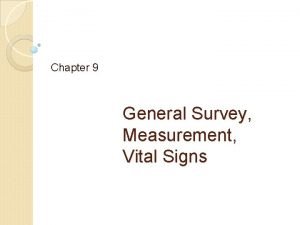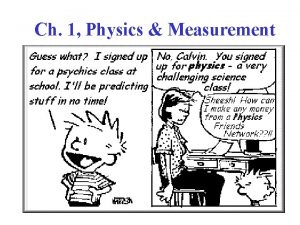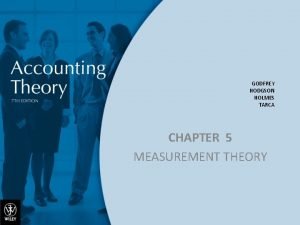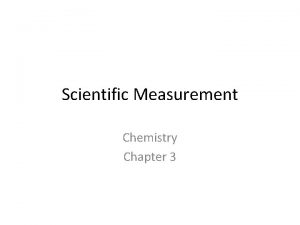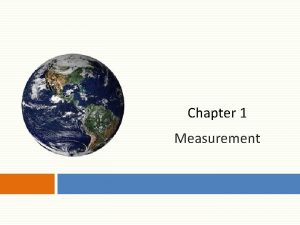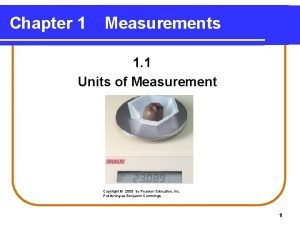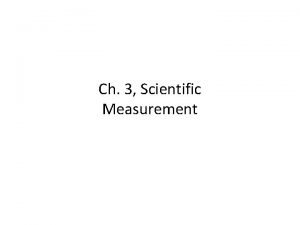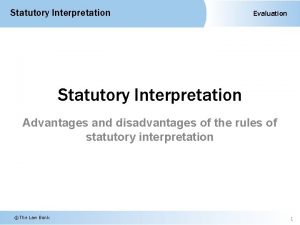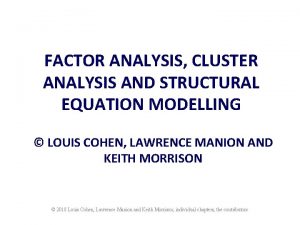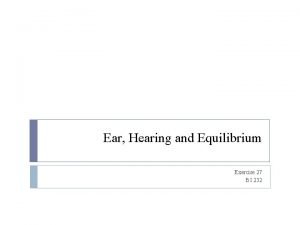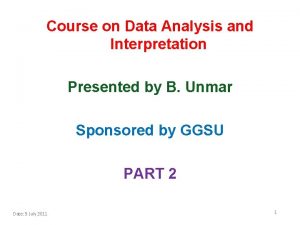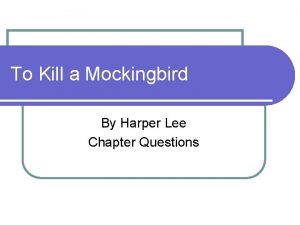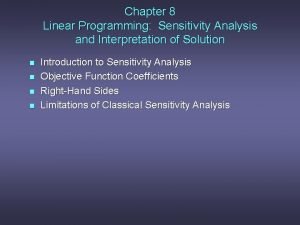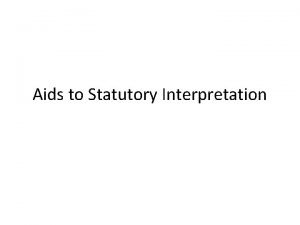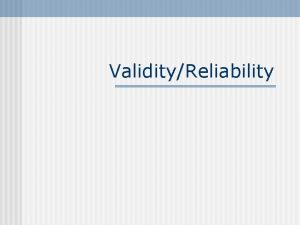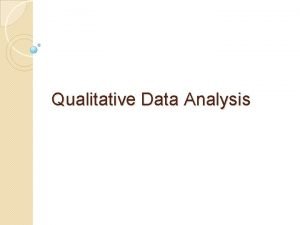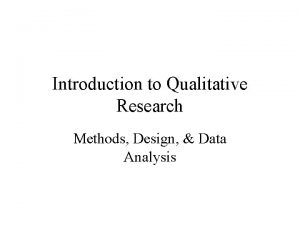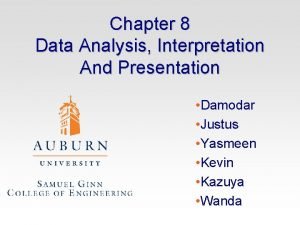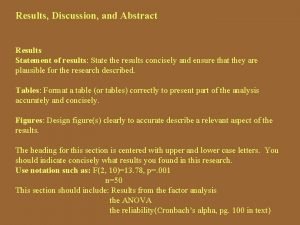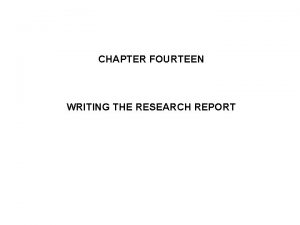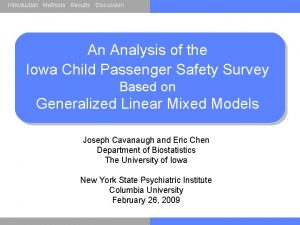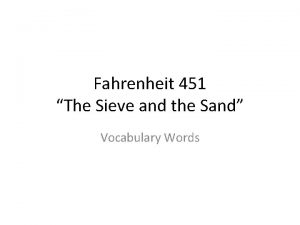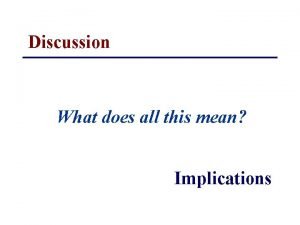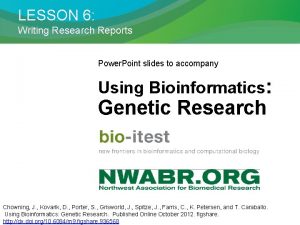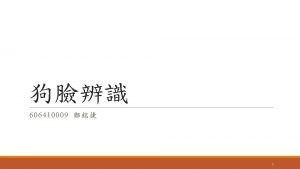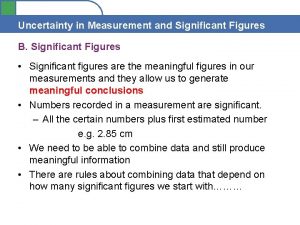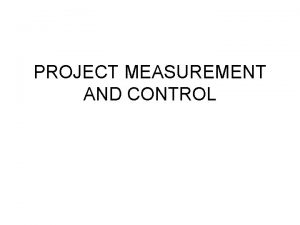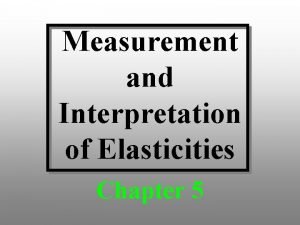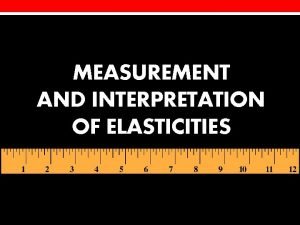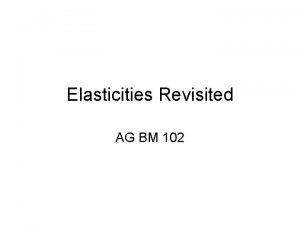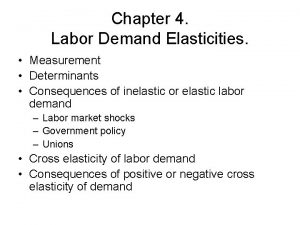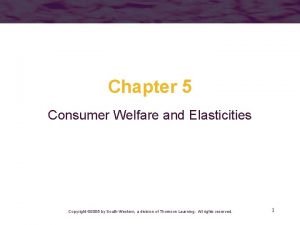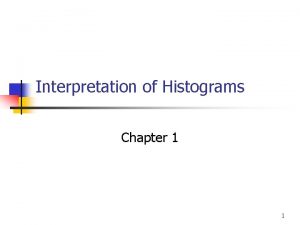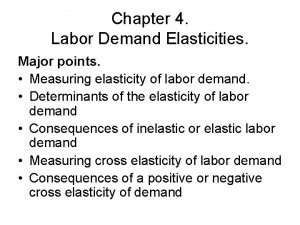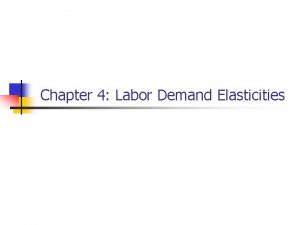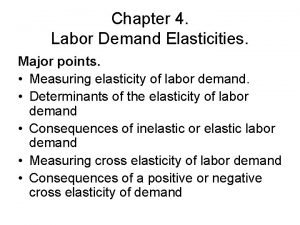Measurement and Interpretation of Elasticities Chapter 5 Discussion












![Second approach… Own price elasticity of demand = [(QA – QB) ([QA + QB] Second approach… Own price elasticity of demand = [(QA – QB) ([QA + QB]](https://slidetodoc.com/presentation_image_h/e3fef4170e713c1e65e323db12d1708b/image-13.jpg)
![Second approach… Own price elasticity of demand = [(QA – QB) ([QA + QB] Second approach… Own price elasticity of demand = [(QA – QB) ([QA + QB]](https://slidetodoc.com/presentation_image_h/e3fef4170e713c1e65e323db12d1708b/image-14.jpg)
![Second approach… Own price elasticity of demand = [(QA – QB) ([QA + QB] Second approach… Own price elasticity of demand = [(QA – QB) ([QA + QB]](https://slidetodoc.com/presentation_image_h/e3fef4170e713c1e65e323db12d1708b/image-15.jpg)

![Third approach… Own price elasticity of demand = [ Q P] × [P Q] Third approach… Own price elasticity of demand = [ Q P] × [P Q]](https://slidetodoc.com/presentation_image_h/e3fef4170e713c1e65e323db12d1708b/image-17.jpg)
![Third approach… Own price elasticity of demand = [ Q P] × [P Q] Third approach… Own price elasticity of demand = [ Q P] × [P Q]](https://slidetodoc.com/presentation_image_h/e3fef4170e713c1e65e323db12d1708b/image-18.jpg)








































































- Slides: 90

Measurement and Interpretation of Elasticities Chapter 5

Discussion Topics üOwn price elasticity of demand üIncome elasticity of demand üCross price elasticity of demand üOther general properties üApplicability of demand elasticities

Key Concepts Covered… ü Own price elasticity = % Qbeef for a given % Pbeef ü Income elasticity = % Qbeef for a given % Income ü Cross price elasticity = % Qbeef for a given % Pchicken Pages 91 -95

Key Concepts Covered… ü Own price elasticity = % Qbeef for a given % Pbeef ü Income elasticity = % Qbeef for a given % Income ü Cross price elasticity = % Qbeef for a given % Pchicken üArc elasticity = range along the demand curve üPoint elasticity = point on the demand curve Pages 91 -95

Key Concepts Covered… ü Own price elasticity = % Qbeef for a given % Pbeef ü Income elasticity = % Qbeef for a given % Income ü Cross price elasticity = % Qbeef for a given % Pchicken üArc elasticity = range along the demand curve üPoint elasticity = point on the demand curve üPrice flexibility = reciprocal of own price elasticity Pages 91 -95

Own Price Elasticity of Demand

Own Price Elasticity of Demand We have the choice of focusing on the elasticity at a specific point on the demand curve or the elasticity over a relevant range on the demand curve Arc elasticity Point elasticity Single point on curve Pa Qa Relevant range on curve Pb Pa Qb Qa Page 91

Own Price Elasticity of Demand Our focus in this course will be on Arc Elasticity, Elasticity or the response in quantity demanded as a result of a given change in the price of the product over a relevant range of the demand curve. Arc elasticity Relevant range on curve Pb Pa Qb Qa Page 91

Three approaches… Own price elasticity of demand = (PA – P B) ([P A+ P B] 2) A B Equation 5. 2 Own price elasticity of demand = [ Q P] × [P Q] Equation 5. 3 Percentage change in quantity Percentage change in price (Q – Q ) ([Q + Q ] 2) Equation 5. 1 Page 91

Three approaches… Own price elasticity of demand = Percentage change in quantity Percentage change in price Equation 5. 1 [Q – Q ([Q + Q ] 2) Given= enough information, all three Equation 5. 2 [P – P ([P + P ] 2) approaches give the same answer Own price elasticity of demand A B A A = [ Q P] × [P Q] B B Equation 5. 3 Page 91

First approach… Own price elasticity of demand = Percentage change in quantity Percentage change in price Equation 5. 1 If you know the percentage change in quantity over a range on the demand curve associated with a given percentage change in price, price you can calculate the elasticity For example, if movie ticket sales drop by 40 percent as a result of a 22 percent increase in ticket prices, the elasticity would be -1. 8, or -1. 8 = -. 40 ÷. 22 Interpretation: A 1% increase (decrease) in price would cause quantity demanded to drop (rise) by 1. 8 percent. Page 91

First approach… Own price elasticity of demand = Percentage change in quantity Percentage change in price Equation 5. 1 Alternatively, if you know the elasticity associated with ticket sales is -1. 80 and have been informed that theater is planning to raise prices 22 percent, percent you can solve for the percentage change in the quantity of ticket sales, or: -1. 80 = % Q ÷. 22 % Q = -1. 80 ×. 22 = -. 40 or - 40% Thus ticket sales will drop by 40% if theater raises ticket prices by 22%. Page 91
![Second approach Own price elasticity of demand QA QB QA QB Second approach… Own price elasticity of demand = [(QA – QB) ([QA + QB]](https://slidetodoc.com/presentation_image_h/e3fef4170e713c1e65e323db12d1708b/image-13.jpg)
Second approach… Own price elasticity of demand = [(QA – QB) ([QA + QB] 2) [(PA – PB) ([PA + PB] 2) Equation 5. 2 The subscript “a” here stands for “after” while “b” stands for “before”. The numerator represents the percent change in quantity over the range of the demand curve associated with Qa and Qb. The denominator represents the percent change in price over the same range. Pb Pa Qb Qa Page 91
![Second approach Own price elasticity of demand QA QB QA QB Second approach… Own price elasticity of demand = [(QA – QB) ([QA + QB]](https://slidetodoc.com/presentation_image_h/e3fef4170e713c1e65e323db12d1708b/image-14.jpg)
Second approach… Own price elasticity of demand = [(QA – QB) ([QA + QB] 2) [(PA – PB) ([PA + PB] 2) Equation 5. 2 Suppose the quantity demanded fell from 3 to 2 when the price increased from $1. 00 to $1. 25, or: PB = $1. 00 QB = 3 PA = $1. 25 QA = 2 Substituting these values into the equation above, we see the elasticity over this range would be: -1. 8 = (2 – 3) 2. 5 ($1. 25 – $1. 00) $1. 125 Page 91
![Second approach Own price elasticity of demand QA QB QA QB Second approach… Own price elasticity of demand = [(QA – QB) ([QA + QB]](https://slidetodoc.com/presentation_image_h/e3fef4170e713c1e65e323db12d1708b/image-15.jpg)
Second approach… Own price elasticity of demand = [(QA – QB) ([QA + QB] 2) [(PA – PB) ([PA + PB] 2) Equation 5. 2 (2 – 3) 2. 5 - 1. 8 = ($1. 25 – $1. 00) $1. 125 Thus if the quantity demanded fell from 3 to 2 when the price increased from $1. 00 to $1. 25, the elasticity over this range would be -1. 8. This suggests that a one percent increase in price would reduce the quantity demanded by 1. 8 percent!!! Page 91

Second approach… Own price elasticity of demand - 1. 8 = [QA – QB ([QA + QB] 2) [PA – PB ([PA + PB] 2) Equation 5. 2 [2 – 3 ([3 + 2] 2) = [$1. 25 – $1. 00 $1. 125]) Alternatively, if you were given the elasticity and told that the price increased from $1. 00 to $1. 25, you can calculate the percentage change in quantity demanded by: - 1. 8 %∆Q = ($1. 25 – $1. 00) $1. 125 - 1. 8 = %∆Q ÷ [($1. 25 – $1. 00) $1. 125] %∆Q = (-1. 8) × [($1. 25 – $1. 00) $1. 125] = (-1. 8) x. 22 = -. 40 Page 91
![Third approach Own price elasticity of demand Q P P Q Third approach… Own price elasticity of demand = [ Q P] × [P Q]](https://slidetodoc.com/presentation_image_h/e3fef4170e713c1e65e323db12d1708b/image-17.jpg)
Third approach… Own price elasticity of demand = [ Q P] × [P Q] Equation 5. 3 We can simplify the calculations in equation 5. 2 by using equation 5. 3 instead when given information on prices and corresponding quantities Page 91
![Third approach Own price elasticity of demand Q P P Q Third approach… Own price elasticity of demand = [ Q P] × [P Q]](https://slidetodoc.com/presentation_image_h/e3fef4170e713c1e65e323db12d1708b/image-18.jpg)
Third approach… Own price elasticity of demand = [ Q P] × [P Q] Equation 5. 3 Suppose the quantity demanded fell from 3 to 2 when the price increased from $1. 00 to $1. 25, or: ∆Q = (2 - 3) = -1; ∆P = ($1. 25 - $1. 00) = $0. 25 Q = (2 + 3) ÷ 2= 2. 5 P = ($1. 25 + $1. 00) ÷ 2 = $1. 125 Page 91

Third approach… Substituting these values into equation 5. 3, we see that the own price elasticity would once again be equal to -1. 8, or: Own price elasticity of demand = [ Q P] × [P Q] Equation 5. 3 = [(-1) $0. 25] × [$1. 125 2. 5] = -1. 8 This formula represents the easiest approach to calculating the elasticity for a given change in price and quantity. Page 91

Hints for application… Application #1: If given the elasticity and the percentage change in price, and asked to determine the impact on quantity demanded, solve for %∆Q using equation 5. 1. Own price elasticity of demand = = Percentage change in quantity Percentage change in price Equation 5. 1 %∆Q %∆P Pb Pa Qb Qa Page 91

Hints for application… Application #2: If given the elasticity and information on calculating the percentage change in price and asked to determine the impact on quantity demanded, solve for %∆Q using equation 5. 2. Own price elasticity of demand = [QA – QB ([QA + QB] 2) [PA – PB ([PA + PB] 2) = %∆Q [PA – PB ([PA + PB] 2) Equation 5. 2 Pb Pa Qb Qa Page 91

Hints for application… Application #3: If given information on both price and quantity before and after the change and asked to calculate the elasticity, use equation 5. 3 Own price elasticity of demand = [ Q P] x [P Q] Q = Qa – Qb P = Pa – Pb P = (Pa + Pb) ÷ 2 Q = (Qa + Qb) ÷ 2 Equation 5. 3 Pb Pa Qb Qa Page 91

Interpreting the Own Price Elasticity of Demand If elasticity coefficient is: Demand is said % in quantity to be: is: Greater than 1. 0 Elastic Greater than % in price Equal to 1. 0 Unitary elastic Inelastic Same as % in price Less than 1. 0 Less than % in price Page 92

Demand Curves Come in a Variety of Shapes

Demand Curves Come in a Variety of Shapes Perfectly inelastic Perfectly elastic Page 92

Demand Curves Come in a Variety of Shapes Inelastic Elastic

Demand Curves Come in a Variety of Shapes Elastic where % Q > % P Unitary Elastic where % Q = % P Inelastic where % Q < % P Page 93

Example of arc own-price elasticity of demand Unitary elasticity…a one for one exchange Page 93

Elastic demand Inelastic demand Page 93

Elastic Demand Curve Price c Cut in price Pb Brings about a larger increase in the quantity demanded Pa 0 Qb Qa Quantity

Elastic Demand Curve Price What happened to producer revenue? c What happened to consumer surplus? Pb Pa 0 Qb Qa Quantity

Elastic Demand Curve Price c Pb a b Pa 0 Producer revenue increases since % P is less that % Q. Qb Qa Revenue before the change was 0 Pba. Qb. Revenue after the change was 0 Pab. Qa. Quantity

Elastic Demand Curve Price c Pb a b Pa 0 Producer revenue increases since % P is less that % Q. Qb Qa Revenue before the change was 0 Pba. Qb. Revenue after the change was 0 Pab. Qa. Quantity

Elastic Demand Curve Price c Pb a b Pa 0 Producer revenue increases since % P is less that % Q. Qb Qa Revenue before the change was 0 Pba. Qb. Revenue after the change was 0 Pab. Qa. Quantity

Revenue Implications Own-price elasticity is: Cutting the price will: Increasing the price will: Elastic Increase revenue Decrease revenue Unitary elastic Not change revenue Inelastic Increase revenue Decrease revenue Page 101

Elastic Demand Curve Price c Pb a b Pa 0 Consumer surplus before the price cut was area Pbca. Qb Qa Quantity

Elastic Demand Curve Price c Pb a b Pa 0 Consumer surplus after the price cut is Area Pacb. Qb Qa Quantity

Elastic Demand Curve Price c Pb a b Pa 0 So the gain in consumer surplus after the price cut is area Pa. Pbab. Qb Qa Quantity

Inelastic Demand Curve Price Cut in price Pb Pa Brings about a smaller increase in the quantity demanded Qb Qa Quantity

Inelastic Demand Curve Price What happened to producer revenue? Pb Pa What happened to consumer surplus? Qb Qa Quantity

Inelastic Demand Curve Price Pb Pa a b Producer revenue falls since % P is greater than % Q. Revenue before the change was 0 Pba. Qb. Revenue after the change was 0 Pab. Qa. 0 Qb Qa Quantity

Inelastic Demand Curve Price Pb Pa a b Producer revenue falls since % P is greater than % Q. Revenue before the change was 0 Pba. Qb. Revenue after the change was 0 Pab. Qa. 0 Qb Qa Quantity

Inelastic Demand Curve Price Pb Pa 0 a b Qb Qa Consumer surplus increased by area Pa. Pbab Quantity

Revenue Implications Own-price elasticity is: Cutting the price will: Increasing the price will: Elastic Increase revenue Decrease revenue Unitary elastic Not change revenue Inelastic Increase revenue Decrease revenue Characteristic of agriculture Page 101

Retail Own Price Elasticities • • • Beef and veal=. 6166 Milk =. 2588 Wheat =. 1092 Rice =. 1467 Carrots =. 0388 • Non food =. 9875 Page 99

Interpretation Let’s take rice as an example, which has an own price elasticity of - 0. 1467. This suggests that if the price of rice drops by 10%, for example, the quantity of rice demanded will only increase by 1. 467%. P Rice producer Revenue? 10% drop Consumer surplus? 1. 467% increase Q

Sample Problems from Old Exams

Example 1. The Dixie Chicken sells 1, 500 Freddie Burger platters per month at $3. 50 each. The own price elasticity for this platter is estimated to be – 0. 30. If the Chicken increases the price of the platter by 50 cents: a. How many platters will the chicken sell? _____ b. The Chicken’s revenue will change by $_____ c. Consumers will be ______ off as a result of this price change.

The answer… 1. The Dixie Chicken sells 1, 500 Freddie Burger platters per month at $3. 50 each. The own price elasticity for this platter is estimated to be – 0. 30. If the Chicken increases the price of the platter by 50 cents: a. How many platters will the chicken sell? __1, 440____ Solution: Equation 5. 2 -0. 30 = % Q [(Pa-Pb) ((Pa+Pb) 2)] -0. 30 = % Q [($4. 00 -$3. 50) (($4. 00+$3. 50) 2)] -0. 30 = % Q [$0. 50 $3. 75] -0. 30 = % Q 0. 133 % Q =(-0. 30 × 0. 133) = -0. 04 or – 4% So new quantity is 1, 440, or (1 -. 04) × 1, 500, or. 96 × 1, 500

The answer… 1. The Dixie Chicken sells 1, 500 Freddie Burger platters per month at $3. 50 each. The own price elasticity for this platter is estimated to be – 0. 30. If the Chicken increases the price of the platter by 50 cents: a. How many platters will the chicken sell? __1, 440____ b. The Chicken’s revenue will change by $__+$510___ Solution: Current revenue = 1, 500 × $3. 50 = $5, 250 per month New revenue = 1, 440 × $4. 00 = $5, 760 per month So revenue increases by $510 per month, or $5, 760 minus $5, 250

The answer… 1. The Dixie Chicken sells 1, 500 Freddie Burger platters per month at $3. 50 each. The own price elasticity for this platter is estimated to be – 0. 30. If the Chicken increases the price of the platter by 50 cents: a. How many platters will the chicken sell? __1, 440____ b. The Chicken’s revenue will change by $__+$510___ c. Consumers will be __worse___ off as a result of this price change. Why? Because price increased.

If given %∆P…. 1. The Dixie Chicken sells 1, 500 Freddie Burger platters per month at $3. 50 each. The own price elasticity for this platter is estimated to be – 0. 30. If the Chicken increases the price of the platter by 13. 3 percent: a. How many platters will the chicken sell? _____ b. The Chicken’s revenue will change by $_____ c. Consumers will be ______ off as a result of this price change.

The answer… 1. The Dixie Chicken sells 1, 500 Freddie Burger platters per month at $3. 50 each. The own price elasticity for this platter is estimated to be – 1. 30. If the Chicken increases the price of the platter by 13. 3 percent: a. How many platters will the chicken sell? __1, 440____ Solution: Equation 5. 1 -0. 30 = % Q % P -0. 30 = % Q 0. 133 % Q = (-0. 30 × 0. 133) = -0. 04 or – 4% So new quantity is 1, 440, or (1 -. 04) × 1, 500, or. 96 × 1, 500

Income Elasticity of Demand

Income Elasticity of Demand Income Percentage change in quantity elasticity of = Percentage change in income demand Equation 5. 4 = [ Q I] x [I Q] Equation 5. 6 where: I = (Ia + Ib) 2 Q = (Qa + Qb) 2 Q = (Qa – Qb) I = (Ia – Ib) Indicates potential changes in demand as the demand curve shifts as a result of a change in consumer disposable income… Page 94 -95

Interpreting the Income Elasticity of Demand If the income elasticity is equal to: Greater than 1. 0 The good is classified as: A luxury and a normal good Less than 1. 0 but greater than 0. 0 A necessity and a normal good Less than 0. 0 An inferior good! Page 95

Some Examples Own Price elasticity Income elasticity Beef -0. 6166 0. 4549 Chicken -0. 5308 . 3645 Cheese -0. 3319 0. 5927 Rice -0. 1467 -0. 3664 Lettuce -0. 1371 0. 2344 Tomatoes -0. 5584 0. 4619 Fruit juice -0. 5612 1. 1254 Grapes -1. 3780 0. 4407 Nonfood items -0. 9875 1. 1773 Commodity Elastic Inferior good Luxury good Page 99

If given the % I… Assume the government cuts taxes, thereby increasing disposable income by 5%. The income elasticity for chicken is. 3645. a. What impact would this tax cut have upon the demand for chicken? b. Is chicken a normal good or an inferior good? Why?

The Answer 1. Assume the government cuts taxes, thereby increasing disposable income (I) by 5%. The income elasticity for chicken is. 3645. a. What impact would this tax cut have upon the demand for chicken? Solution: . 3645 = % QChicken % I Equation 5. 4. 3654 = % QChicken . 05 % QChicken =. 3645 . 05 =. 018 or + 1. 8%

The Answer 1. Assume the government cuts taxes, thereby increasing disposable income by 5%. The income elasticity for chicken is. 3645. a. What impact would this tax cut have upon the demand for chicken? _____+ 1. 8%___ b. Is chicken a normal good or an inferior good? Why? Chicken is a normal good but not a luxury since the income elasticity is > 0 but < 1. 0

Cross Price Elasticity of Demand

Cross Price Elasticity of Demand Cross Price Percentage change in quantity Equation 5. 7 elasticity of = Percentage change in another price demand = [ QH PT] × [PT QH] Equation 5. 9 where: PT = (PTa + PTb) 2 QH = (QHa + QHb) 2 QH = (QHa – QHb) PT = (PTa – PTb) Indicates potential change in demand as the demand curve shifts as a result of a change in the price of another good… Page 95

Interpreting the Cross Price Elasticity of Demand If the cross price elasticity is equal to: Positive The good is classified as: Substitutes Negative Complements Zero Independent Page 96

Some Examples Item Prego Ragu Hunt’s Prego -2. 5502 . 8103 . 3918 Ragu . 5100 -2. 0610 . 1381 Hunt’s 1. 0293 . 5349 -2. 7541 Values in red along the diagonal are own price elasticities… Page 100

Some Examples Item Prego Ragu Hunt’s Prego -2. 5502 . 8103 . 3918 Ragu . 5100 -2. 0610 . 1381 Hunt’s 1. 0293 . 5349 -2. 7541 Values off the diagonal are all positive, indicating these products are substitutes as prices change… Page 100

Some Examples Item Prego Ragu Hunt’s Prego -2. 5502 . 8103 . 3918 Ragu . 5100 -2. 0610 . 1381 Hunt’s 1. 0293 . 5349 -2. 7541 An increase in the price of Ragu Spaghetti Sauce has a bigger impact on Hunt’s Spaghetti Sauce than vice versa. Page 100

Some Examples Item Prego Ragu Hunt’s Prego -2. 5502 . 8103 . 3918 Ragu . 5100 -2. 0610 . 1381 Hunt’s 1. 0293 . 5349 -2. 7541 A 10% increase in the price of Ragu Spaghetti Sauce increases the demand for Hunt’s Spaghetti Sauce by 5. 349%…. . Page 100

Some Examples Item Prego Ragu Hunt’s Prego -2. 5502 . 8103 . 3918 Ragu . 5100 -2. 0610 . 1381 Hunt’s 1. 0293 . 5349 -2. 7541 But…a 10% increase in the price of Hunt’s Spaghetti Sauce increases the demand for Ragu Spaghetti Sauce by only 1. 381%…. . Page 100

Example 1. The cross price elasticity for hamburger demand with respect to the price of hamburger buns is equal to – 0. 60. a. If the price of hamburger buns rises by 5 percent, what impact will that have on hamburger consumption? b. What is the demand relationship between these products?

If Given % PHB… 1. The cross price elasticity for hamburger demand with respect to the price of hamburger buns is equal to – 0. 60. a. If the price of hamburger buns rises by 5%, what impact will that have on hamburger consumption? ____ - 3% ______ Solution: Equation 5. 7 -. 60 = % QH % PHB -. 60 = % QH . 05 % QH =. 05 (-. 60) = -. 03 or – 3%

The Answer 1. The cross price elasticity for hamburger demand with respect to the price of hamburger buns is equal to – 0. 60. a. If the price of hamburger buns rises by 5%, what impact will that have on hamburger consumption? ___ - 3% _____ b. What is the demand relationship between these products?

The Answer 1. The cross price elasticity for hamburger demand with respect to the price of hamburger buns is equal to – 0. 60. a. If the price of hamburger buns rises by 5%, what impact will that have on hamburger consumption? ___ - 3% _____ b. What is the demand relationship between these products? These two products are complements as evidenced by the negative sign on this cross price elasticity.

Another Example 2. Assume that a retailer sells 1, 000 six-packs of Pepsi per day at a price of $3. 00 per six-pack. Also assume the cross price elasticity for Pepsi with respect to the price of Coca Cola is 0. 70. a. If the price of Coca Cola rises by 5 percent, what impact will that have on Pepsi consumption? b. What is the demand relationship between these products?

The Answer 2. Assume that a retailer sells 1, 000 six-packs of Pepsi per day at a price of $3. 00 per six-pack. Also assume the cross price elasticity for Pepsi with respect to the price of Coca Cola is 0. 70. a. If the price of Coca Cola rises by 5 percent, what impact will this have on Pepsi consumption? Solution: Equation 5. 7. 70 = % QPepsi % PCoke. 70 = % QPepsi . 05 =. 035 or 3. 5% New quantity of Pepsi sold = 1, 000 1. 035 = 1, 035 New value of Pepsi sales = 1, 035 $3. 00 = $3, 105

The Answer 2. Assume that a retailer sells 1, 000 six-packs of Pepsi per day at a price of $3. 00 per six-pack. Also assume the cross price elasticity for Pepsi with respect to the price of Coca Cola is 0. 70. a. If the price of Coca Cola rises by 5 percent, what impact will that have on Pepsi consumption? __35 six-packs or $105 per day__ b. What is the demand relationship between these products?

The Answer 2. Assume that a retailer sells 1, 000 six-packs of Pepsi per day at a price of $3. 00 per six-pack. Also assume the cross price elasticity for Pepsi with respect to the price of Coca Cola is 0. 70. a. If the price of Coca Cola rises by 5 percent, what impact will that have on Pepsi consumption? __35 six-packs or $105 per day__ b. What is the demand relationship between these products? The products are substitutes as evidenced by the positive sign on this cross price elasticity!

Elasticity Formulas For Exam Own price elasticity of demand Income elasticity of demand Cross price elasticity of demand = Percentage change in quantity Percentage change in price Percentage change in quantity = Percentage change in income Percentage change in quantity = Percentage change in another price Equation 5. 1 Equation 5. 4 Equation 5. 7 You will not have to calculate a percentage change in a numerator or denominator…

Price Flexibility of Demand

Price Flexibility We earlier said that the price flexibility is the reciprocal of the own-price elasticity. If the calculated elasticty is - 0. 25, then the flexibility would be - 4. 0.

Price Flexibility We earlier said that the price flexibility is the reciprocal of the own-price elasticity. If the calculated elasticty is - 0. 25, then the flexibility would be - 4. 0. This is a useful concept to producers when forming expectations for the current year. If the USDA projects an additional 2% of supply will likely come on the market, then producers know the price will likely drop by 8%, or: % Price = - 4. 0 x % Quantity = - 4. 0 x (+2%) = - 8% If supply increases by 2%, price would fall by 8%!

Price Flexibility We earlier said that the price flexibility is the reciprocal of the own-price elasticity. If the calculated elasticty is - 0. 25, then the flexibility would be - 4. 0. This is a useful concept to producers when forming expectations for the current year. If the USDA projects an additional 2% of supply will likely come on the market, then producers know the price will likely drop by 8%, or: If supply increases % Price = - 4. 0 x % Quantity by 2%, price would = - 4. 0 x (+2%) fall by 8%! = - 8% Note: make sure you use the negative sign for both the elasticity and the flexibility.

Revenue Implications Own-price elasticity is: Increase in supply will: Decrease in supply will: Elastic Increase revenue Decrease revenue Unitary elastic Not change revenue Inelastic Increase revenue Decrease revenue Characteristic of agriculture Page 101

Changing Price Response Over Time Short run effects Long run effects Over time, consumers respond in greater numbers. This is referred to as a recognition lag… Page 97

Ag’s Inelastic Demand Curve Price Pb Pa a b A small increase in supply will cause the price of Ag products to fall sharply. This explains why major program crops receive Subsidies from the federal government. Increase in supply 0 Qb Qa Quantity

Inelastic Demand Curve Price Pb Pa 0 a b Qb Qa While this increases the costs of government programs and hence budget deficits, remember consumers benefit from cheaper food costs. Quantity

Demand Characteristics Ø Which market is riskier for producers…elastic or inelastic demand? Ø Which market would you start a business in? Ø Which market is more apt to need government subsidies to stabilize producer incomes?

The Market Demand Curve Price What causes movement along a demand curve? Quantity

The Market Demand Curve Price What causes the demand curve to shift? Quantity

In Summary… ü Know how to interpret all three elasticities ü Know how to interpret a price flexibility ü Understand revenue implications for producers if prices are cut (raised) ü Understand the welfare implications for consumers if prices are cut (raised) ü Know what causes movement along versus shifts the demand curve

Chapter 6 starts a series of chapters that culminates in a market supply curve for food and fiber products….
 Formula for elasticity of demand
Formula for elasticity of demand How does interpretation b differ from interpretation a
How does interpretation b differ from interpretation a Fractional distillation discussion
Fractional distillation discussion Chapter 4 data presentation and analysis
Chapter 4 data presentation and analysis Night three never surrender discussion questions
Night three never surrender discussion questions Chapter 4 findings and discussion
Chapter 4 findings and discussion Work measurement techniques
Work measurement techniques Measurement elsevier
Measurement elsevier Chapter 9 general survey and measurement
Chapter 9 general survey and measurement Base and derived quantities
Base and derived quantities Measurement 1 physics
Measurement 1 physics Joy luck club book club questions
Joy luck club book club questions Hunger games chapter 18 questions and answers
Hunger games chapter 18 questions and answers Themes in the book night
Themes in the book night Never let me go chapter 22
Never let me go chapter 22 Explain the importance of the lord of the flies chapter 8
Explain the importance of the lord of the flies chapter 8 Chapter 11 summary of lord of the flies
Chapter 11 summary of lord of the flies Discussion questions for the glass castle
Discussion questions for the glass castle Brave new world chapter 6
Brave new world chapter 6 1984 discussion questions
1984 discussion questions Walk two moons chapter 44
Walk two moons chapter 44 Tuesdays with morrie the classroom
Tuesdays with morrie the classroom Night chapter 2 discussion questions
Night chapter 2 discussion questions Huckleberry finn discussion questions
Huckleberry finn discussion questions Picture of dorian gray discussion questions
Picture of dorian gray discussion questions Frankenstein discussion questions
Frankenstein discussion questions Discussion chapter
Discussion chapter Persepolis chapter 7
Persepolis chapter 7 Measurement theory in accounting
Measurement theory in accounting Chapter 8 section 2 earthquake measurement answer key
Chapter 8 section 2 earthquake measurement answer key Chemistry chapter 3 scientific measurement
Chemistry chapter 3 scientific measurement Chapter 1 measurement
Chapter 1 measurement Chapter 1 measurement
Chapter 1 measurement Chapter 3 scientific measurement
Chapter 3 scientific measurement Progress and performance measurement and evaluation
Progress and performance measurement and evaluation Evaluation in progress
Evaluation in progress Art analysis vs art interpretation
Art analysis vs art interpretation Children's apperception test cards ppt
Children's apperception test cards ppt Evolution of computer architecture
Evolution of computer architecture Advantages of the literal rule
Advantages of the literal rule Topographic map construction
Topographic map construction Difference between factor analysis and cluster analysis
Difference between factor analysis and cluster analysis Strict construction of penal statutes
Strict construction of penal statutes Example of analysis and interpretation of data
Example of analysis and interpretation of data Interpretation and construction
Interpretation and construction Round window function
Round window function Example of analysis and interpretation of data
Example of analysis and interpretation of data Foot washing baptist to kill a mockingbird
Foot washing baptist to kill a mockingbird The role of context
The role of context Module 19 visual organization and interpretation
Module 19 visual organization and interpretation What is shadow price in sensitivity analysis
What is shadow price in sensitivity analysis Intrinsic aids
Intrinsic aids Difference between observation and interpretation
Difference between observation and interpretation National network for interpreting
National network for interpreting Discourse analysis example
Discourse analysis example Data analysis procedure in research
Data analysis procedure in research Narmeen is viewing the board in the classroom
Narmeen is viewing the board in the classroom Nnrims
Nnrims Damodar sessions
Damodar sessions Endothelial permeability
Endothelial permeability Questioning and discussion techniques in the classroom
Questioning and discussion techniques in the classroom What is luchesi’s role in the story?
What is luchesi’s role in the story? Results and discussion in research
Results and discussion in research Qualitative research results and discussion
Qualitative research results and discussion Macbeth questions and answers
Macbeth questions and answers Example of results and discussion
Example of results and discussion Echo and narcissus questions
Echo and narcissus questions Results and discussion in research
Results and discussion in research Results and discussion vs conclusion
Results and discussion vs conclusion The crucible act three
The crucible act three Result discussion
Result discussion Fahrenheit 451
Fahrenheit 451 Management of resources in sbm
Management of resources in sbm Methodology results and discussion
Methodology results and discussion Introduction method result and discussion
Introduction method result and discussion Hobby conversation
Hobby conversation Vocab words in fahrenheit 451
Vocab words in fahrenheit 451 Dos and don'ts of group discussion
Dos and don'ts of group discussion Findings and discussion
Findings and discussion Discussion and implications
Discussion and implications Results and discussion
Results and discussion Minuhud
Minuhud Quantitative vs qualitative biology
Quantitative vs qualitative biology Result and discussion in research example
Result and discussion in research example Effective group discussion: theory and practice
Effective group discussion: theory and practice Using questioning and discussion techniques
Using questioning and discussion techniques Discussion and conclusion
Discussion and conclusion Questioning and discussion techniques
Questioning and discussion techniques Significant figures cartoon
Significant figures cartoon Peer review process cmmi
Peer review process cmmi Fundamentals of instrumentation and measurement ppt
Fundamentals of instrumentation and measurement ppt



